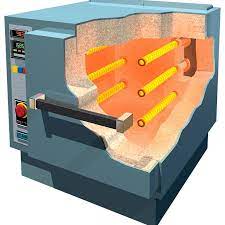HOW DO YOU CARE FOR YOUR FURNACE?



There are several heating alternatives available for your house. Electric furnaces, gas furnaces, and convection heaters all have advantages and disadvantages, so deciding which is ideal for your family may be tough. The most common type of furnace that is widely used is the gas furnace. A gas furnace is natural gas-fueled home heating equipment. Natural gas is used in the furnace, which warms the air before it is distributed throughout the house. All of the components of a properly functional gas furnace must work in unison.
Components of a Gas Furnace
The components of a gas furnace are as follows:
- Your HVAC unit’s communication hub is the thermostat. The thermostat instructs the heater to switch on when the air in your house becomes too chilly.
- The Draft Hood/Fan directs air towards the burners, where it burns and warms the air before being redistributed throughout the home.
- The metal tubes through which natural gas passes are known as burners, and they are used to heat the entering air.
- The heat exchanger is made out of metal tubes that are heated by the burners and used to warm the air within the furnace.
- The blower guides air entering via the ducts towards the heat exchanger before returning it to the ducts to be dispersed throughout your home.
- A flue is a vent that gathers and sends combustion gas waste outdoors and away from the house.
How does a Furnace work?
Step 1: Thermostat instructs the furnace to turn on and heat the house.
When your home becomes too chilly, your thermostat will signal your furnace to turn on and warm it up. Your furnace will not turn on without this order. It’s critical to check your thermostat first if you’re having furnace problems. Your heating system may be able to be restarted with a simple battery swap.
Step 2: In the burner, natural gas is ignited.
A valve opens when your thermostat delivers a low-voltage instruction to warm the house, enabling natural gas to flow towards the burner. The blower then guides the incoming air from the ducting to the burner, where it begins to warm.
Step 3: Ignition of the Burner
A pilot light, also known as electrical ignition, ignites the burner from within the combustion chamber as the gas is directed towards it. This warms the natural gas through which the incoming air flows, allowing the air to warm up before being carried back to the ducts.
Step 4: Separating the Combustion Waste from the Good Air
You want your home’s air to be healthy. Your heater is in charge of ensuring that the waste does not enter your house with the air when it is reintroduced. The air is forced through a hot-air plenum to accomplish this. A flue collects any exhaust and directs it away from the home and outdoors, shielding those within from potentially harmful gases.
Step 5: Re-distribute and re-distribute
The cold air is driven back towards the furnace by the ducts as the warm air exits the ductwork and enters its residence, leaving the warm air alone in the room. This keeps you and your family warm and comfortable. The process will continue until the heater is commanded to switch off, as the initial warmer air cools and is replaced by new warm air.
Furnace Maintenance
You can help maintain your furnace running safely and effectively by doing the following periodic maintenance:
Check and replace the air filters:
A clogged filter can restrict airflow and efficiency, and if too much dust and grime accumulate within the Furnace Installation Canton, it may cease operating. Change the filter at least once every three months.
Keep the vents clean and clear:
Remove vent covers from your home’s floors, walls, and ceilings before turning on your heating system for the season. Dust, pet hair, tiny things (such as toys), and even food can accumulate. This might obstruct airflow, making your furnace work harder.
A carbon monoxide detector should be installed:
Carbon monoxide is produced when furnaces burn gas or oil to heat your house. Install battery-operated or battery-backed carbon monoxide detectors on each level of your home to assist you to notice if your furnace is leaking this deadly, odorless gas.
Conclusion
During the winter, your furnace is essential for keeping your house warm. Performing these routine maintenance procedures may help maintain your furnace in good working order, allowing it to keep you warm throughout winter.



